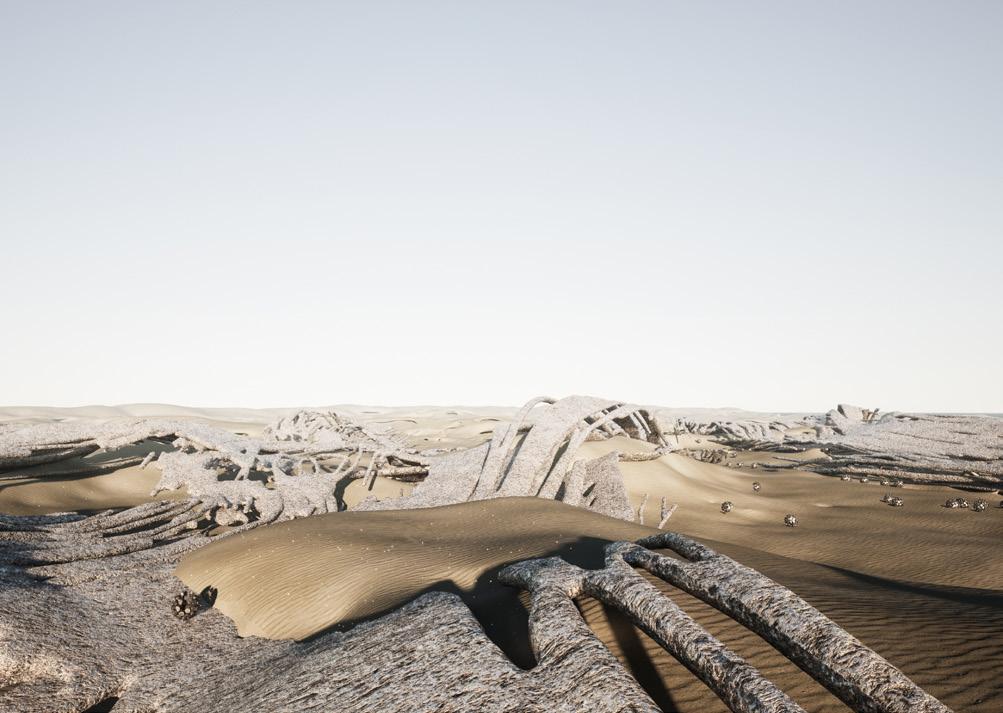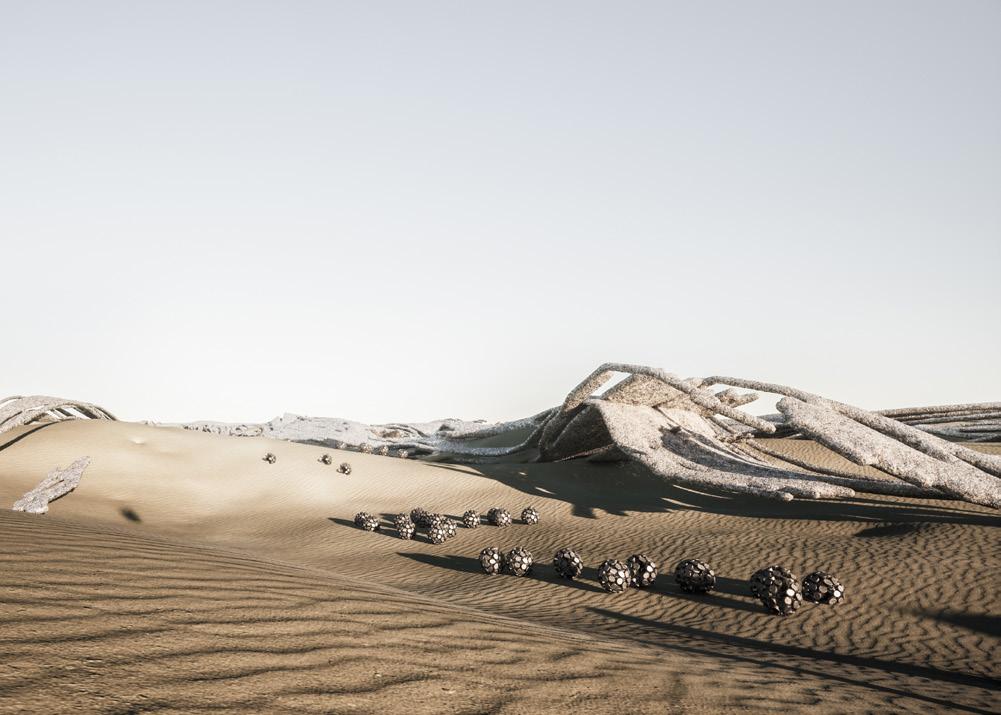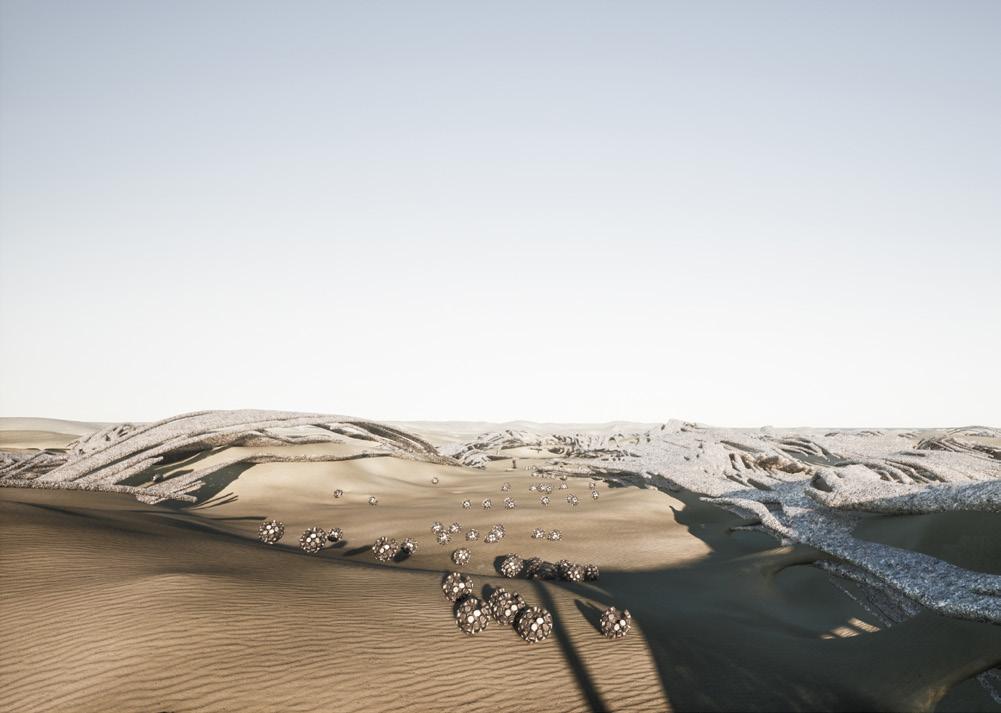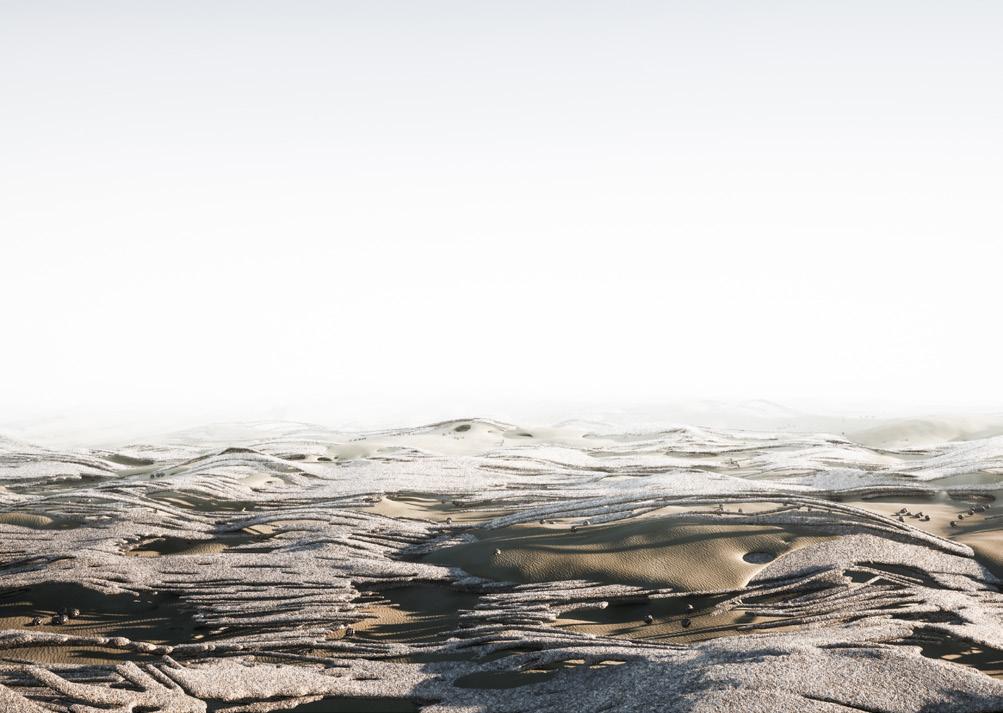
2 minute read
CONCLUSION ARCHITECTURE
from AEOLIAN - AADRL
by Salim Hilles
The objective of this project is to utilize onsite fabrication to construct infrastructural glass formations in desert regions, in order to intervene and address the physical expansion of deserts over living ecosystems. Given the harsh desert environment and large scale of implementation, the structures will be fabricated by fusing sand particles on the desert’s surface through the use of a high population of autonomous robots, being autonomous and capable of making decisions in a constantly changing environment where solutions cannot be pre-planned.
The initial stage of the project involved researching the causes and processes of desertification in various regions and conditions, in order to gain a deeper understanding of the differences and origins of desertified lands. A range of experiments and simulations were conducted to study the behaviour of sand under the force of wind, specifically in the context of sand dunes in deserts. Techniques such as sand 3D printing with a magnifying glass, natural erosion, and sand-to-glass transformation under high temperatures were also explored as potential fabrication methods using sand as a local material. Ultimately, the decision was made to focus on utilizing a welder tool to fuse sand into glass as the primary material system research direction. Glass models were fabricated using this method at various scales and techniques in order to investigate the potential of this approach.
Advertisement
During the research phase, a variety of physical models were created using additive manufacturing techniques such as 3D printing and industrial robots, laser cutting, CNC, and 3D scanning of terrains. Arduino was used to program the behaviour of the robots and various physical experiments were conducted to explore the potential of sand as a construction material.
Computational software was studied and employed to simulate the behaviour and performance of the proposed structures in order to slow down and redirect particles away from living environments. The strategy is to fuse the back-side of dune faces in order to block and change the direction of particles’ paths. The collective behaviour of the robots would result in a geometry consisting of a large number of individual, segmented surfaces of glass that repeat the natural surface of the landscape of the desert. The design of the agent employs a range of behaviours, it analyses locally the landscape, communicates with other agents, moves on top of sand, fuses the sand and harness energy. The physical prototypes of its behaviour and motion were executed and tested with the Arduino platform and various sensors.
The use of glass as a material for this project is sustainable and recyclable as over time, the activity of wind and erosion can return the glass to its original state as sand. This means that no new materials are being introduced to the environment and instead, the physical state of the existing sand is being altered.
This is an infrastructural project, whose architectural value unfolds in its ability to sustain life. Architecture in a conventional sense of a building cannot address the planetary scale problems. Therefore, the research is based on a type of augmentation on a scale of a city, architecture on a scale of infrastructure.













